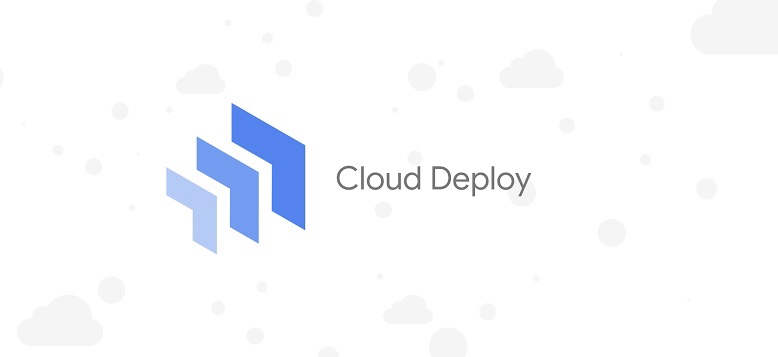25. Deployment with Cloud Deploy
 Mileke Kolawole
Mileke Kolawole
Introduction: The Deployment Stage in CI/CD
CI/CD pipelines take your code from development to production in a structured, automated way. We've automated builds and tests with Cloud Build. Now, let's focus on the crucial deployment stage—the process of releasing new versions of your software to target environments.
Remember, a successful deployment ensures:
Seamless Updates: Your users experience minimal disruption as new features and fixes roll out.
Consistency: Code gets deployed the same way into environments like staging, testing, and production, minimizing surprises.
Reliability: Rollbacks are easy in case issues arise, allowing for quick recovery.
Cloud Deploy: GCP's Deployment Orchestrator
Cloud Deploy simplifies and streamlines the deployment process within the Google Cloud Platform. It helps you define pipelines that manage how releases progress throughout different environments, providing control, visibility, and auditability.
Key Capabilities of Cloud Deploy
Here's a breakdown of the core features that set Cloud Deploy apart:
Pipeline Management: Define declarative pipelines that describe how your release progresses through environments (e.g., test -> staging -> production).
Delivery Targets: Deploy to a variety of GCP targets, including:
Google Kubernetes Engine (GKE)
Cloud Run
Anthos clusters
Release Control: Use approvals for manual checks at key points in your pipeline, ensuring quality and governance.
Customizable Steps: Integrate custom scripting for tailored actions within your deployment process.
Integration with Cloud Build: Triggers Cloud Deploy pipelines seamlessly based on successful build completion.
Visibility and Auditability: Provides detailed logs and insights into your deployment history, promoting transparency.
Why Cloud Deploy for Your CI/CD Pipelines
Reduced Complexity: Simplifies the often error-prone process of deployments, especially with multiple environments.
Improved Reliability: Standardizes your release process, lowering the risk of mistakes leading to outages.
GCP Focus: Designed to integrate effortlessly with other GCP services within your CI/CD workflows.
Example: A Typical Cloud Deploy Pipeline
Think of a pipeline with these stages:
Test Environment: Deploy initially for automated and/or manual testing.
Approval: A designated team member approves the progression to staging.
Staging Environment: Deploys to an environment mirroring production for final checks.
Production Deployment: Releases the new version to your users.
Core Concepts
Before we dive into the practicalities of deploying applications with Cloud Deploy, let's establish a solid foundation in its core functionalities. We'll explore the fundamental building blocks: delivery pipelines, deployment targets, and releases. Understanding these concepts will make constructing and utilizing Cloud Deploy pipelines a breeze.
Delivery Pipelines: Think of pipelines as the roadmap for your release. They are defined using YAML and describe the stages your application moves through (e.g., testing, staging, production).
Targets: A target represents a specific deployment environment. Cloud Deploy supports GKE, Cloud Run, Anthos clusters, and more, ensuring you can deploy to the GCP infrastructure that fits your needs.
Releases: A release is a snapshot of your application. It's associated with a specific build artifact (e.g., a container image) and can be promoted through the various stages of your pipeline.
Promoting Releases Through Environments
Cloud Deploy excels at managing the controlled flow of your application releases through different environments. We'll examine how pipelines orchestrate this promotion process, ensuring your application undergoes necessary testing and approvals before reaching production.
Controlled Progression: Cloud Deploy facilitates managing how releases move from development to testing to production. Each stage in your pipeline can be configured with specific deployment steps and checks.
Approvals: To ensure quality and control, you can integrate manual approval steps before releases progress to critical environments like production.
Customization and Flexibility
Cloud Deploy isn't limited to just deploying your application. We'll unveil its true power in customizing workflows. Pipelines can be extended to include pre- and post-deployment steps, allowing you to integrate tasks like running tests, database migrations, or configuration management. We'll also touch upon the ability to write custom execution tasks in Cloud Deploy for ultimate control.
Tailored Workflows: Pipelines aren't just about deployment. You can include steps for running tests, updating configuration, migrating data, or executing other specialized tasks.
Extensions: If needed, Cloud Deploy allows you to write custom tasks, providing ultimate flexibility to handle unique requirements.
Streamlining CI/CD with Artifact Registry
You've automated your builds with Cloud Build and streamlined deployments with Cloud Deploy. Now, it's time to organize and centralize the outputs of these processes. In the next article, we'd explore Artifact Registry, GCP's secure and scalable artifact management service. Get ready to discover how it elevates your CI/CD game!
Subscribe to my newsletter
Read articles from Mileke Kolawole directly inside your inbox. Subscribe to the newsletter, and don't miss out.
Written by
